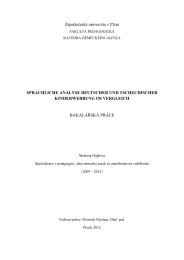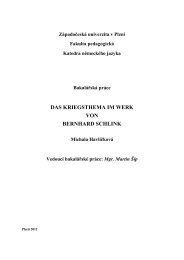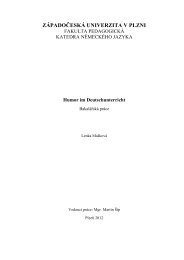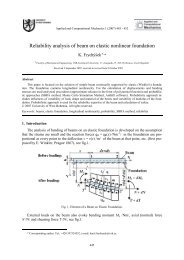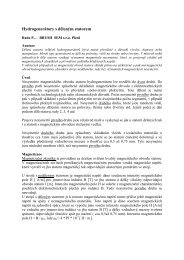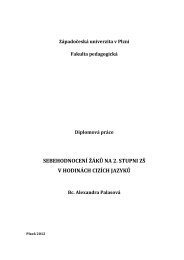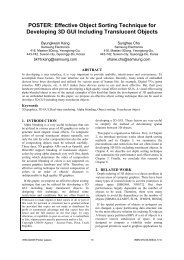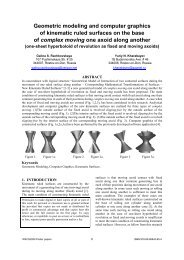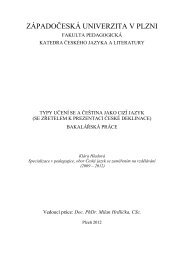POSTER: Optimized Daugman's Algorithm for Iris Localization
POSTER: Optimized Daugman's Algorithm for Iris Localization
POSTER: Optimized Daugman's Algorithm for Iris Localization
Create successful ePaper yourself
Turn your PDF publications into a flip-book with our unique Google optimized e-Paper software.
<strong>POSTER</strong>: <strong>Optimized</strong> Daugman’s <strong>Algorithm</strong> <strong>for</strong> <strong>Iris</strong><br />
<strong>Localization</strong><br />
Dr. Mohamed A. Hebaishy<br />
National Authority <strong>for</strong> Remote Sensing and Space Science<br />
Gozif Titp St., Elnozha Elgididah.<br />
Egypt (11769), Cairo<br />
HTUMa_hebaishy@yahoo.comUTH<br />
ABSTRACT<br />
<strong>Iris</strong> localization is considered the most difficult part in iris identification algorithms because it defines<br />
the inner and outer boundaries of iris region used <strong>for</strong> feature analysis. Several researches were made in the<br />
subject of iris finding and segmentation. The main objective here is to remove any non-useful in<strong>for</strong>mation,<br />
namely the pupil segment and the part outside the iris (sclera, eyelids, skin). R. Wildes used Hough trans<strong>for</strong>ms to<br />
detect the iris contour. Daugman proposed an integro-differential operator to find both the pupil and the iris<br />
contour. Daugman’s method is claimed to be the most efficient one. This paper proposes an implementation <strong>for</strong><br />
<strong>Daugman's</strong> algorithm, which was found incompatible with visible light illuminated images. Then this paper<br />
proposes new algorithm <strong>for</strong> solving this problem.<br />
Keywords<br />
Biometrics, Human Identification, <strong>Iris</strong> localization, Daugman’s <strong>Algorithm</strong><br />
1. INTRODUCTION<br />
The human iris begins to <strong>for</strong>m in the third<br />
month of gestation and the structure is complete by<br />
the eight month, even though the color and<br />
pigmentation continue to build through the first<br />
year of birth. After that, the structure of the iris<br />
remains stable throughout a person’s life, except <strong>for</strong><br />
direct physical damage or changes caused by eye<br />
surgery. The iris hence parallels the fingerprint in<br />
uniqueness but enjoys a further advantage that it is<br />
an internal organ and less susceptible to damages<br />
over a person’s lifetime [1]. It is composed of<br />
several layers which gives it its unique appearance.<br />
This uniqueness is visually apparent when looking<br />
at its rich and small details seen in high resolution<br />
camera images under proper focus and illumination.<br />
The iris is the ring-shape structure that encircles the<br />
pupil, the dark centered portion of the eye, and<br />
stretches radially to the sclera, the white portion of<br />
the eye see XFigure 1X, it shares high-contrast<br />
boundaries with the pupil but less-contrast<br />
boundaries with the sclera.<br />
The iris identification system is to<br />
automatically recognize the identity of a person<br />
from a new image by comparing it to the human iris<br />
patterns annotated with identity in a stored<br />
database[2]. A general iris recognition system is<br />
composed of four steps. Firstly, an image<br />
containing the user’s eye is captured by the system.<br />
Then, the image is preprocessed to normalize the<br />
scale and illumination of the iris and localize the<br />
iris in the image. Thirdly, features representing the<br />
iris patterns are extracted. Finally, decision is made<br />
by<br />
Limbic<br />
Boundary<br />
Pupillary<br />
Boundary<br />
<strong>Iris</strong><br />
Upper<br />
Eyelid<br />
Eyelashes<br />
Lower<br />
Eyelid<br />
Figure 1. Eye image expected to be used in the<br />
iris recognition system<br />
The iris identification system is to automatically<br />
recognize the identity of a person from a new image<br />
by comparing it to the human iris patterns<br />
annotated with identity in a stored database[2]. A<br />
general iris recognition system is composed of four<br />
steps. Firstly, an image containing the user’s eye is<br />
captured by the system. Then, the image is<br />
preprocessed to normalize the scale and<br />
illumination of the iris and localize the iris in the<br />
image. Thirdly, features representing the iris<br />
WSCG2008 Poster papers 5 ISBN 978-80-86943-17-6
patterns are extracted. Finally, decision is made by<br />
means of matching. There are four key parts in the<br />
iris recognition system: iris image acquisition,<br />
preprocessing, feature extraction, and classifier<br />
design[3].<br />
In a world where we will increasingly do business<br />
with parties we've never met, and might never<br />
meet, authentication will become as integral a part<br />
of the transaction as the exchange of goods and<br />
tender. The robustness of iris recognition makes it<br />
ideal <strong>for</strong> authenticating parties to commercial<br />
transactions, to reduce fraud in applications like<br />
check-cashing and ATMs, unauthorized activity in<br />
applications like treasury management, and in<br />
future, to ensure non-repudiation of sales, or to<br />
provide Letter of Credit and other authentication<br />
services in an electronic commerce environment[4].<br />
Daugman has shown that iris patterns have about<br />
250 degrees of freedom, i.e. the probability of two<br />
eyes having the same iris texture is about 1 in 7<br />
billion. Even the 2 irises of an individual are<br />
different thereby suggesting that iris textures are<br />
independent of the genetic constitution of an<br />
individual. <strong>Iris</strong> recognition has been successfully<br />
deployed in many large scale and small scale<br />
applications.<br />
<strong>Iris</strong> localization is considered the most difficult part<br />
in iris identification algorithms because it defines<br />
the inner and outer boundaries of iris region used<br />
<strong>for</strong> feature analysis[5]. The main objective here is<br />
to remove any non-useful in<strong>for</strong>mation, namely the<br />
pupil segment and the part outside the iris (sclera,<br />
eyelids, skin). R. Wildes used Hough trans<strong>for</strong>ms to<br />
detect the iris contour. Daugman proposed an<br />
integro-differential operator to find both the pupil<br />
and the iris contour. Daugman’s algorithm is<br />
claimed to be the most efficient one. After<br />
analyzing The <strong>Daugman's</strong> iris locating and pointing<br />
out the some limitations of this algorithm, this<br />
paper proposes optimized Daugman’s algorithms<br />
<strong>for</strong> iris localization.<br />
2. DAUGMAN'S ALGORITHM:<br />
<strong>Daugman's</strong> algorithm is based on applying<br />
an integro-differential operator to find the iris and<br />
pupil contour[3].<br />
The equation is as follows:<br />
∂ I(<br />
x,<br />
y)<br />
max( r,<br />
x , y ) G ( r)<br />
∗<br />
o o ∫ ds<br />
σ<br />
∂r<br />
r<br />
r , x o , 2π<br />
y o<br />
Equation 1. <strong>Daugman's</strong> Integro-Differential<br />
Equation<br />
Where: x<br />
0<br />
, y0<br />
, r0<br />
: the center and radius of coarse<br />
circle (<strong>for</strong> each of pupil and iris). G σ<br />
(r)<br />
: Gaussian<br />
Δ<br />
function. r : the radius range <strong>for</strong> searching <strong>for</strong>.<br />
I ( x,<br />
y)<br />
: the original iris image.<br />
G σ<br />
(r) is a smoothing function, the smoothed image<br />
is then scanned <strong>for</strong> a circle that has a maximum<br />
gradient change, which indicates an edge. The<br />
above algorithm is done twice, first to get the iris<br />
contour then to get the pupil contour. It worth<br />
mentioning here the problem is that the illumination<br />
inside the pupil is a perfect circle with very high<br />
intensity level (nearly pure white). There<strong>for</strong>e, we<br />
have a problem of sticking to the illumination as the<br />
max gradient circle. So a minimum pupil radius<br />
should be set. Another issue here is in determining<br />
the pupil boundary the maximum change should<br />
occur at the edge between the very dark pupil and<br />
the iris, which is relatively darker than the bright<br />
spots of the illumination. Hence, while scanning the<br />
image one should take care that a very bright spot<br />
value could deceive the operator and can result in a<br />
maximum gradient. This simply means failure to<br />
localize the pupil. The following experimental<br />
results have been getting using UPOL database.<br />
3. OPTIMIZED DAUGMAN'S<br />
ALGORITHM:<br />
As a solution to this problem, modification<br />
to the integro-differential operator is proposed to<br />
ignore all circles if any pixel on this circle has a<br />
value higher than a certain threshold. This threshold<br />
is determined to be 200 <strong>for</strong> the grayscale image.<br />
This ensures that only the bright spots – values<br />
usually higher than 245 – will be cancelled.<br />
Another solution we considered is to treat<br />
the illumination by truncating pixels higher than a<br />
certain threshold – bright spots – to black. But this<br />
method failed in many images, this is because when<br />
the spot hits the pupil the illumination spreads on<br />
the pupil so as we treat the illumination spots it will<br />
leave behind a maximum change edges that can not<br />
be determined and the operator will consider it the<br />
pupil boundary . The sequence of the <strong>Algorithm</strong><br />
procedure is cleared in the flowchart shown in<br />
Figure 2.<br />
Figure 3 shows the experimental results<br />
each daugman’s algorithm and optimization<br />
Daugman’s algorithm.<br />
WSCG2008 Poster papers 6 ISBN 978-80-86943-17-6
Database<br />
<strong>Daugman's</strong><br />
<strong>Algorithm</strong><br />
<strong>Daugman's</strong><br />
optimization<br />
Number<br />
of<br />
samples Fill Success Fill Success<br />
UPOL 384 75% 25% 0% 100%<br />
Table 1. Experimental results<br />
The proposed algorithm is tested by<br />
applying it on UPOL database that includes about<br />
384 images <strong>for</strong> 128 persons the localization<br />
successful percentage was 100%.<br />
4. CONCLUSION:<br />
The above studies show that the irislocating<br />
algorithm based on integro-differential<br />
operator suffers from bright spots of the<br />
illumination inside the pupil , so the optimized<br />
Daugman’s algorithm overcome this problem an<br />
gives a successful results <strong>for</strong> iris localization<br />
process.<br />
5. ACKNOWLEDGMENTS<br />
Figure 2 Flowchart of optimized <strong>Daugman's</strong><br />
localization algorithm operation.<br />
I would like to express my appreciation to<br />
the Egyptian space program at NARSS <strong>for</strong> their<br />
support and encouragements.<br />
6. REFERENCES<br />
[1] J. G. Daugman, “High confidence visual<br />
recognition of person by a test of statistical<br />
independence,” IEEE Trans.PAMI 15, 1148-1161<br />
(1993).<br />
[2] J. G. Daugman, "The importance of being<br />
random: statistical principles of iris recognition,"<br />
Patern. Recognition 36, 279-291 (2003).<br />
[3] Yong Zhu, Tieniu Tan and Yunhong Wang,<br />
“Biometric Personal Identification Based on <strong>Iris</strong><br />
Patterns” National Laboratory of Pattern<br />
Recognition (NLPR), Institute of Automation,<br />
Chinese Academy of Sciences, P. R. China, 2003<br />
[4] HTUhttp://www.unisys.com/news/releases/2001UTH<br />
/jun/ 06218031.asp<br />
[5] J. G. Daugman, “How iris recognition works,”<br />
IEEE Trans. Circuits and Syst. <strong>for</strong> Video Tech.<br />
14(1), 21-30 (2004).<br />
Input Image<br />
<strong>Localization</strong> Results<br />
without Daugman<br />
Optimization<br />
Figure 3 : <strong>Localization</strong> results<br />
<strong>Localization</strong> Results<br />
After Daugman<br />
Optimization<br />
WSCG2008 Poster papers 7 ISBN 978-80-86943-17-6
WSCG2008 Poster papers 8 ISBN 978-80-86943-17-6




